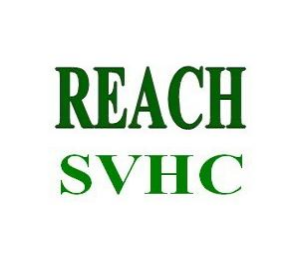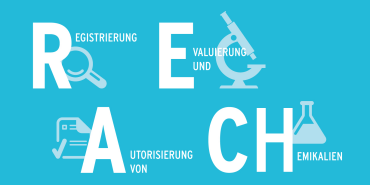service items
European certification
REACH testing
1. The meaning of REACH test
REACH is the abbreviation of REGULATION concerning the Registration, Evaluation, Authorization and Restriction of Chemicals (REGULATION concerning the Registration, Evaluation, Authorization and Restriction of Chemicals), established by the European Union and implemented on June 1, 2007 Regulatory system.
This is a regulatory proposal concerning the safety of chemical production, trade, and use. The regulations are designed to protect human health and environmental safety, maintain and improve the competitiveness of the EU chemical industry, and develop innovative capabilities for non-toxic and harmless compounds to prevent market fragmentation. , Increase transparency in the use of chemicals, promote non-animal experiments, and pursue sustainable social development. REACH has established the concept that society should not introduce new materials, products or technologies if their potential hazards are unknown.
2. The main content of REACH regulations
◆ Registration (Registration) All chemical substances with an annual output or import volume of more than 1 ton need to be registered, and chemical substances with an annual output or import volume of more than 10 tons should also submit a chemical safety report.
◆ Evaluation (Evaluation) includes file evaluation and material evaluation. File evaluation is to check the completeness and consistency of the registration files submitted by the company. Substance assessment is to confirm the risk of chemical substances harming human health and the environment.
◆ Authorisation (Authorisation) Authorizes the production and import of chemical substances that have certain hazardous characteristics and attract people's attention, including CMR, PBT, vPvB, etc.
◆ Restriction If it is deemed that the manufacture, placing on the market or use of a certain substance, preparation or article causes the risk to human health and the environment to be insufficiently controlled, its production or import in the EU will be restricted.

3. Responsibilities and Obligations of Articles in REACH Regulations
◆ If the product contains intentionally released substances, and the annual export volume of the substance is greater than 1 ton, registration is required.
◆ If the product does not contain intentionally released substances:
1. If the product contains substances of very high concern (ie SVHC) and the content is less than 0.1%, there is no need to notify and actively carry out information transmission, but if the importer or consumer requests it, they are obliged to provide relevant information;
2. If the product contains SVHC, and the content is greater than 0.1%, and the annual export volume is less than 1 ton, it must be notified to the downstream importer and related information transmission, and relevant certification documents must be issued at the same time;
3. If the product contains SVHC and the content is greater than 0.1%, and the annual export volume is greater than 1 ton, it must be notified to ECHA;
4. At the request of consumers, all suppliers of goods should provide consumers with sufficient information that they can obtain within 45 days of receiving the request, so that the goods can be used safely. This information includes at least the name of the substance.
◆ Restricted substances
That is, Annex 17 of the REACH Regulation, which restricts the manufacture, placing on the market and use of certain hazardous substances, preparations and articles. It is an important work content for articles other than SVHC. The EU’s old regulatory regulations on restricted substances dated June 1, 2009 Directive 76/769/EEC was repealed, and all relevant regulations were included in the REACH regulations for unified implementation. Any substance, whether it is itself or contained in preparations or articles, as long as the use of the substance poses an unacceptable risk to human health and the environment, it must be restricted within the EU. Regarding the restricted content, there is a clear statement in Annex 17 Regulation.
Three, what is SVHC
According to Article 57 of the REACH Regulations, substances that have one or more of the following hazardous properties and cause high concern:
(1) Category 1, Category 2 carcinogenic, teratogenic, and reproductive toxicity substances, namely CMR1/2 substances;
(2) Persistent, bioaccumulative and toxic substances, namely PBT substances;
(3) Substances with high persistence and high bioaccumulation, namely vPvB substances;
(4) It has endocrine disrupting properties, or has persistence, bioaccumulation and toxicity, or has high persistence, high bioaccumulation but does not meet the criteria of 2 and 3, and there is scientific evidence to prove that it is caused to humans or the environment. Seriously affected substances.
1. When the product contains SVHC, the company needs to fulfill its responsibilities and obligations
◆ When selling as a substance, it is necessary to provide SDS (Safety Data Sheet) to downstream users.
◆ As a substance in the mixture (preparation), when the content of this substance is ≥0.1%, SDS needs to be provided to downstream users.
◆ When the SVHC quality percentage in the article is >0.1%, the recipient of the article or at the request of the consumer must provide sufficient information, including the substance name and content, etc., that can be obtained free of charge within 45 days.
◆For SVHCs that were included in the list before December 1, 2010, if the quality percentage concentration in the article exceeds 0.1% and the total amount is greater than 1 ton/year, the obligation to notify ECHA must be completed on June 1, 2011, 2010 SVHCs that have been included in the list after December 1st of the year and meet the notification requirements must complete the notification within 6 months after being included in the list.

2. SVHC notification
On June 1, 2007, the EU REACH regulation-"Registration, Evaluation, Authorisation and Restriction of Chemicals" "Registration, Evaluation, Licensing and Restriction of Chemicals" regulations came into effect. REACH regulations stipulate various chemicals and downstream articles. Responsibility is a law that has a wide range of influence so far.
The candidate list of Annex XIV of the REACH Regulation is the SVHC list. The regulations stipulate that for substances of very high concern (SVHC) that meet the following two conditions, the manufacturer or importer of the article shall notify ECHA:
◆The total content of SVHC substances in the article exceeds 1t/y/manufacturer or importer;
◆The total content of SVHC substances in the article exceeds the concentration of 0.1% in terms of quality score.
3. Who needs to be notified
◆ EU manufacturer
◆ EU importer
◆ Non-EU manufacturers (must be commissioned on behalf of OR)
4. When to notify
◆For substances included in the SVHC list before December 1, 2010, the notification must be submitted within 6 months from June 1, 2011;
◆For substances included in the SVHC list after December 1, 2010, the notification must be submitted within 6 months from the date of publication.
Fourth, why REACH needs to be notified
The EU implements REACH regulations on products circulating within the country. Products in the EU must fulfill the obligations of REACH regulations before they can be legally produced or imported. Countries have passed strict regulatory and punitive measures against REACH legislation. EU customs can conduct REACH compliance review. If REACH regulations are violated, they will face product recalls, fines and even imprisonment.
CPSIA testing California 65 testing REACH testing ecological textile testing textile clothing testing leather footwear leather goods testing electronics and electrical testing jewelry testing toy testing sports equipment testing furniture material testing food contact material testing packaging material testing salt spray corrosion testing metal component analysis formula component analysis.
Five, REACH detection mode
REACH testing is generally carried out by mixed testing, that is, all metal materials of the product are mixed into one material, and non-metallic materials are mixed into one material, and then tested separately.
Six, REACH registration regulations
The listed substances are in the European Existing Commercial Chemicals List (EINECS) and have been produced in the European Union (including countries that joined on January 1, 2007), but have not been placed on the European Union market after June 1, 1992 Substances, which are recognized as "substances that are not long-chain polymers." For these substances, the following deadlines must be submitted when registering:
November 30, 2010
The registration deadline for the production or import of substances of 1,000 tons or more per year, carcinogenic, mutagenic or toxic reproductive substances of more than 1 ton per year, and more than 100 tons of aquatic organisms or environmental hazardous substances per year.
May 31, 2013
The deadline for registration of substances produced or imported at 100-1000 tons per year.
May 31, 2018
The deadline for registration of substances produced or imported between 1-100 tons per year.
All substances that do not meet any standard phase are regarded as non-phase-in substances. Normally, non-phase-in substances are not manufactured and sold or used in the EU before June 1, 2008, according to Directive 67/548 /EEC unless they are notified.
Potential manufacturers and importers of non-phased substances must submit an inquiry to ECHA, and then register the substance in accordance with REACH before they can produce or import the substance.
All substances notified under Directive 67/548/EEC (also called NONS) are considered to be registered under REACH, and ECHA has registered all notifications. Employers can request a registration number from ECHA’s notice.
How did the REACH test judge and fail?
Like other chemical tests, REACH testing is also an important indicator for judging the environmental performance of products, but the question is, how can REACH testing be considered as passed? In fact, the Reach Act is aimed at controlling the weight of elements exported to the EU for one year. Therefore, a single over-standard will not become a stumbling block for exports to the EU, as long as the weight can be well controlled.
Seven, what is SVHC notification
REACH Annex XIV Candidate List is the SVHC list. REACH regulations stipulate that substances of very high concern (SVHC) that meet the following two conditions
, The manufacturer or importer of the article should notify ECHA:
The total content of SVHC substances in the article exceeds 1t/y/manufacturer or importer;
The total content of SVHC substances in the article exceeds the concentration of 0.1% in terms of mass fraction.
Who needs SVHC notification
EU manufacturer, EU importer, non-EU manufacturer (must be commissioned on behalf of OR)
The simple process of REACH test application is as follows:
1. Contact the REACH testing agency and put forward REACH testing requirements
2. Fill in the REACH test application form
3. Send samples
4. Pay and start testing
5. Release REACH test report.






 telephone:
telephone: Phone:
Phone: Email:
Email: Address:
Address: